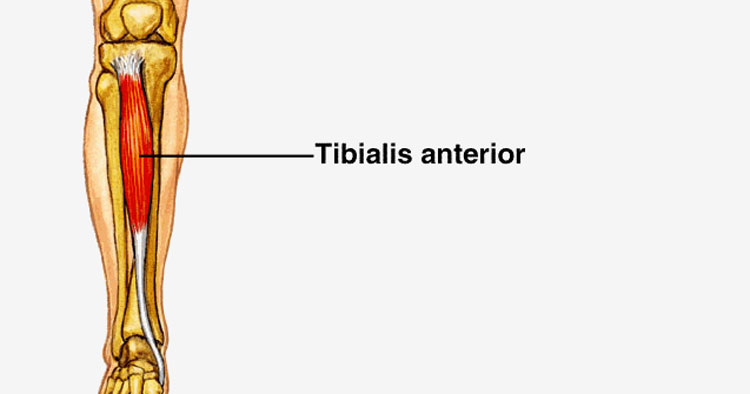Muscle Pain and Tendinopathy
Tibialis Anterior The Muscle Of The Week
Anatomy Of The Tibialis Anterior Muscle
Tibialis anterior muscle is often referred to as Tib Ant in short, originates from the upper 1/2 – 2/3 of the lateral surface of the tibia and adjoining fascia and membranes. Your tibialis anterior is the largest muscle in the anterior compartment of the leg having a thick belly of muscle before these muscle fibers run downward into the tendon as it travels towards its insertion just below the ankle in the foot where it inserts into the medial and under surface of the first cuneiform bone, and the base of the first metatarsal bone of the foot. Visually when tib ant muscle is active the tendon is often relatively easily seen and palpated as it “pops’ out in the lower part of the leg extending into the front of the ankle.
The Function Of Tibialis Anterior
Muscles in the anterior compartment of the lower leg help to flex the foot in an upward direction at the ankle known as dorsiflexion and extend the toes upwards. Tibialis Anterior as previously mentioned is the largest of these muscles and its main actions are to help with this dorsiflexion motion as well as inversion the foot.
- Doriflexion of the ankle is the action of pulling the foot upwards, lifting the top of the foot up towards the shin bone.
- Inversion of the foot is the action of tilting the foot inward a movement that occurs at the subtalar and midtarsal joints of the foot.
- Adduction of the foot, a movement where the foot rotates medially (toward the midline).
- Tib Ant also assists in maintaining the medial longitudinal arch of the foot through its tendon insertions on the medial cuneiform and first metatarsal.
The actions of tibialis anterior are dependent on whether the foot is weight bearing or not (respectively referred to as closed kinetic chain, or open kinetic chain actions).
- Tib Ant helps to stabilise the ankle as the foot contacts the ground during walking and when the foot is on the ground your tibialis anterior muscle helps to balance the leg, so that the leg remains vertical.
- During swing phase of walking and running tib-ant acts again this time to pull the foot clear of the ground, so you don’t “catch” your toes as you bring your leg forward with each step you take.
- During actions such as kicking a ball, contraction of the muscles of the foot and ankle (including Tibialis Anterior) work to ‘lock’ the ankle holding it in the desired position through a co-contracton of muscles around the foot and ankle joints.
Henceforth, tibialis anterior is crucially involved in a number of daily activities such as walking, hiking, running, as well as sports that involve kicking actions, where without your tib-ant these movements become challenging, inefficient and in some cases impossible.
Pain And Injury Involving Tib Ant
Clinically involvement of the tibialis anterior muscle and tendon in pain and pathology can include:
- Tendinopathy, which may include issues with the tendon itself including degeneration and tears, as well as tenosynovitis of the tendon sheath surrounding the tendon. Tenosynovitis is one of the most common reasons patients visit our Sydney physio practice with regard to tib-ant complaints.
- Neuropathy, is a situation where damage to the innervating nerve can impact activation and function of a muscle. This may come about as a result of local trauma to the peripheral nerve, trauma to the knee, or the sciatic nerve (commonly irritated as a result of lumbar spine or pelvic conditions). When tib-ant is not recieving the nerve input required to function then people will commonly present with what is referred to as a “foot drop.”
- Probably the most frequent complaint involving the tib ant muscle we see, are common conditions afflicting runners shin splints and compartment syndrome.
Disclaimer: Sydney Physio Clinic provides this information as an educational service and is not intended to serve as medical advice. Anyone seeking specific advice or assistance on Muscle Of The Week: Tibialis Anterior should consult his or her personal trainer, physiotherapist, general practitioner or other appropriately skilled practitioner.


